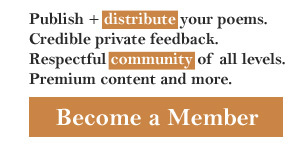This is an analysis of the poem Tum Bhi Rehne Lage Khafaa Saahib! that begins with:
Tum bhi rehne lage khafaa saahib!
KahiN saaya mera paRaa saahib!...
Elements of the verse: questions and answers
The information we provided is prepared by means of a special computer program. Use the criteria sheet to understand greatest poems or improve your poetry analysis essay.
- Rhyme scheme: XX XX XX XX XX XX
- Stanza lengths (in strings): 2,2,2,2,2,2,
- Closest metre: trochaic pentameter
- Сlosest rhyme: no rhyme
- Сlosest stanza type: tercets
- Guessed form: unknown form
- Metre: 11111010 1010101010 1110101010 11111010 10101101111 1111111010 1111111101 111111010 111110010 111111110 1111101110 101101010
- Amount of stanzas: 6
- Average number of symbols per stanza: 70
- Average number of words per stanza: 13
- Amount of lines: 12
- Average number of symbols per line: 34 (medium-length strings)
- Average number of words per line: 7
Mood of the speaker:
There are many exclamation marks in the poem. The speaker is excited. He or she has strong feelings on the subject that is described in the poem.
The speaker asks many questions. Perhaps, he or she is in confusion.
The author used lexical repetitions to emphasize a significant image; saahib, kis, e are repeated.
The poet used anaphora at the beginnings of some neighboring lines. The same word kis is repeated.
The author used the same word kis at the beginnings of some neighboring stanzas. The figure of speech is a kind of anaphora.
There is a poetic device epiphora at the end of some neighboring lines saahib is repeated).
The poet repeated the same word saahib at the end of some neighboring stanzas. The poetic device is a kind of epiphora.
If you write a school or university poetry essay, you should Include in your explanation of the poem:
- summary of Tum Bhi Rehne Lage Khafaa Saahib!;
- central theme;
- idea of the verse;
- history of its creation;
- critical appreciation.
Good luck in your poetry interpretation practice!
Pay attention: the program cannot take into account all the numerous nuances of poetic technique while analyzing. We make no warranties of any kind, express or implied, about the completeness, accuracy, reliability and suitability with respect to the information.
More information about poems by Momin Khan Momin
- Analysis of Chal Pare Hat Mujhe Na Dikhla Munh!
- Analysis of Yeh Aarzu Thi
- Analysis of Seena-Koobi Se Zameen Saari Hilaa K Utthe

